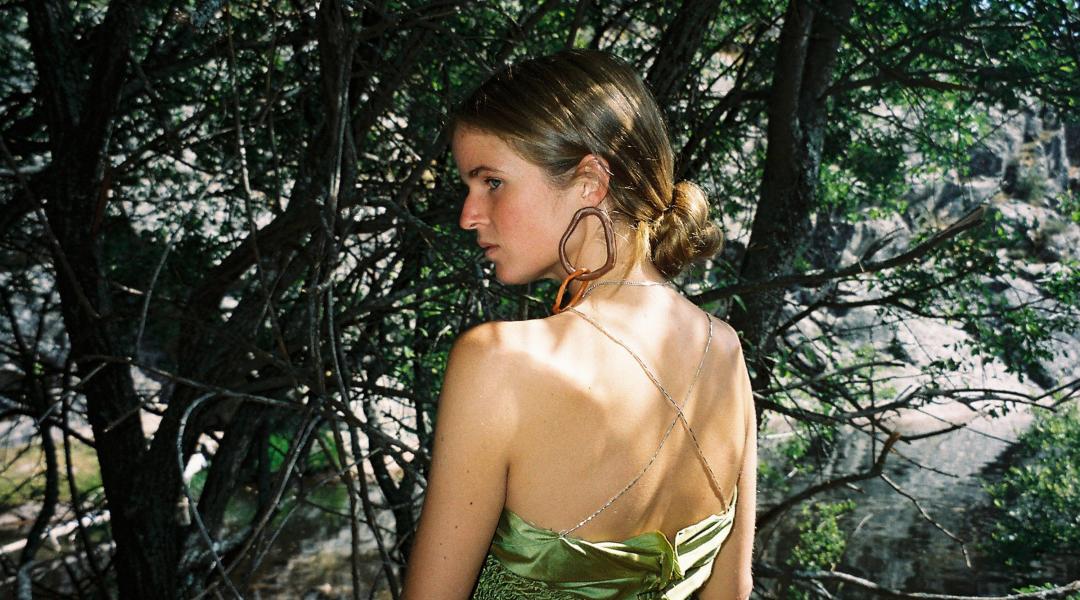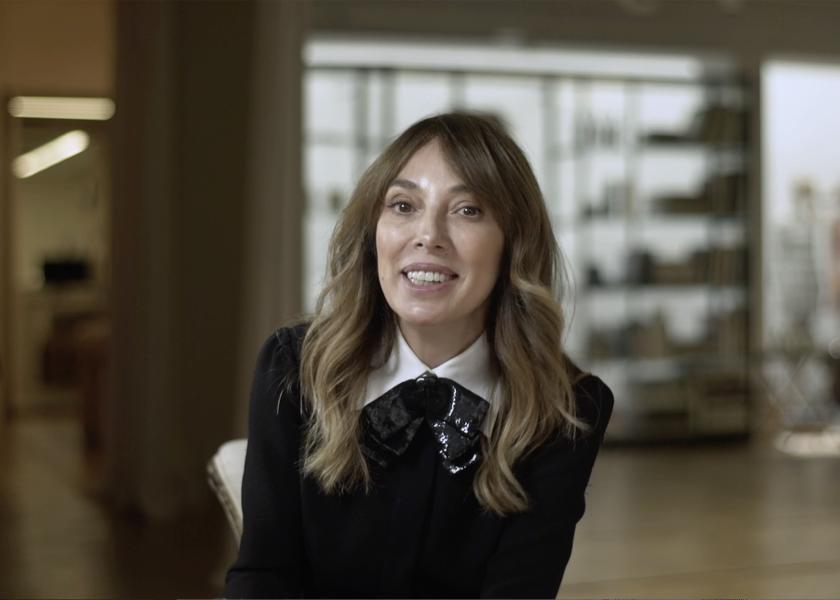María Rosenfeldt
The Responsibility To Be Yourself

The idea María Rosenfeldt has of herself as a fashion designer has more to do with lasting in time than with reflecting ephemeral tendencies. The Madrilenian, face of the Heridadegato firm, is about to turn 29 and admits she is going through a period, both personally (“because I’ve been relying on my intuition and on divine providence”) and professionally (“because I’ve found a textile style that is sustainable and consistent with the environment”).
María Rosenfeldt (Madrid, 1990), proud daughter of photographer Ouka Leele, opens the doors of her studio to show us her new autumn-winter collection, share a few ideas for her proposal for next summer, and explain the reasons for her philosophy of life – a lifestyle based on naturalness, spirituality, learning and constant evolution. She says that Heridadegato is the continuation of her final thesis at the European Institute of Design in Madrid and the project she launched alongside the person she shared her life with for six years: “After the breakup I lost a lot of weight. When you start a relationship at a very young age, the two parties don’t always evolve the same way. And maybe suddenly you realise you’ve been in a relationship for six years and you don’t really know who you are anymore. I’m only now starting to get to know myself.”
Her pre-Raphaelite muse-like appearance—tall, very thin, long golden hair—inspires tranquillity and radiates light. It becomes obvious as soon as she starts speaking in a soft tone and at a slow pace, although that doesn’t keep her from being emphatic in what she says: “The truth is that the fashion industry is run from Paris. That’s just the way it is. It’s where buyers from all the stores the world over meet up, and when they acquire a collection, they pay upfront, something that doesn’t happen in Spain. Here what they do is return it when the sales season starts and the collection hasn’t been sold. And I would almost say that they return it to you dirty.”
We talk with the creator in her workshop, located in Madrid’s San Lorenzo street. This is the den where the ideas and desires that make up the Heridadegato collections take shape, the costume designs and the custom made orders. There are racks with collections ready to be presented, a table with frames full of vases with dried flowers. Stacked piles of incense boxes, burnt bars and some scattered ash. And there’s a wall crammed with pictures that make up the firm’s imagery.
“The truth is that the fashion industry is run from Paris. That’s just the way it is”
She doesn’t seem to be the typical creator with terrible obsessions. Rather María Rosenfeldt is a breath of fresh air compared to the intensity some of her colleagues display. “When I was studying, they asked us to set up inspiration boards, then the drawings of the looks and, finally, the pieces. I work completely the other way around. I buy fabrics and start to try forms on the mannequin. For example, the inspiration for the summer 2020 collection I drew from a clay mask that Amara (her assistant) put on her face. I really liked how it changed the colour of the clay as it dried up and I started looking for fabrics that change their shade according to the type of light that shines on them.”
The concept for the imminent fall-winter 2019/20 collection, called Kaos, is different. “I was looking for something more punky and dark, although there are bright colours and details with spray. Mind you, we do keep the gathered silhouettes as a trademark.” What’s also part of the firm’s identity are Rosenfeldt’s principles and common sense. In spite of the exorbitant sales prices stores put on her designs (“of the 400 euros a pair of shoes are sold for in Los Angeles, I only receive 50. I find it more and more difficult to work with intermediaries”), she advocates the reuse of fabrics (those used to produce her garments are recycled) and insists that her clothes be worn by women of all ages. “I’m one of those people who think that when you strive to do the right thing, the universe helps you to make everything work. It sounds a bit hippie, but I totally believe it’s true.”






